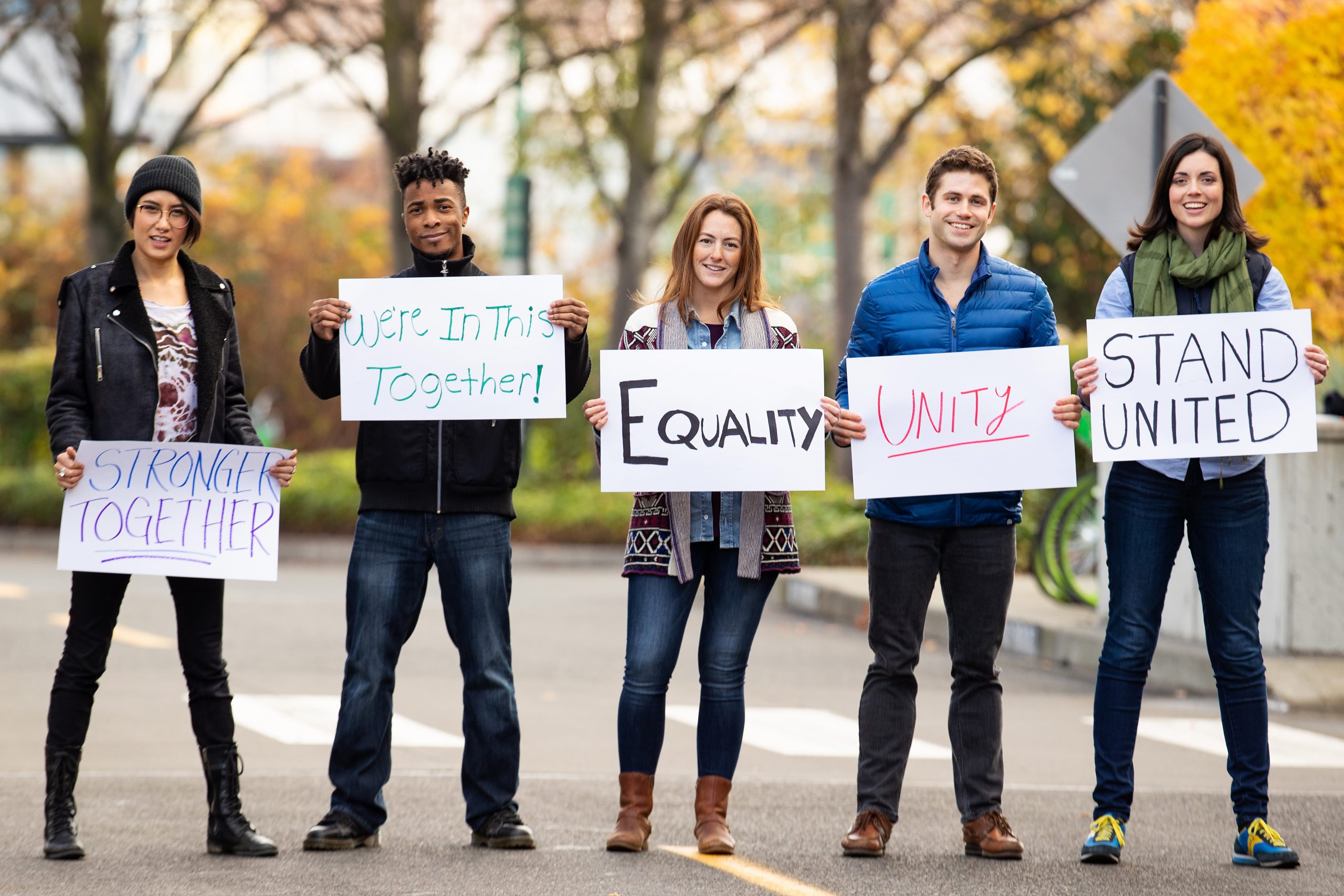Written by: Sherreta R. Harrison
In any moment of societal upheaval, there emerges a unique and necessary role: the activist. An activist is one who is usually aware of causes and challenges before the rest of the world and tries tirelessly to get the rest of us on board. As a result, he or she either adopts or is assigned the title of leader and is expected to, in some cases, risk it all to guide the rest of us to the light.
While it is customary to praise this view of leadership, where one acts as the all- knowing savior for his or her community, organization or family, the truth of the matter is that when we adopt or assign the role of “leader” to any one individual (and this is especially the case for the activist), we are handicapping the individual. But, more importantly, we are hindering the progress of the movement.
Consider what happens when one “becomes a leader”. First, it feels like an honor. Maybe because people have finally recognized your views on the issue or the hard work you’ve done to address the issue. It validates you, so you work harder. You search for solutions, you implement those solutions and you labor to keep those solutions going long after everyone else has moved on to the next cause. You become the go- to person for all things related to your cause, the face of the movement, and as long as you are doing what the people want you to do without causing too much discomfort, you won’t face any opposition. Before long, you are the only person working for the change that everyone said they wanted and even when progress is being made, it is slow and often unrecognized. The people who once revered and respected you are now questioning your abilities, and, in some cases, actively working against you. You are now wondering why folks don’t realize that you can’t do this alone and why even though everyone has a solution, no one has stepped up to do the work. You grow tired, the people grow tired, the movement becomes a moment and we live to see the cycle repeat itself.
This traditional view of leadership, the one that places the burden of delivering change solely on the shoulders of the individual, is the one that seems most consistent with our view of an activist and is often the primary reason many movements don’t persist to their desired outcomes. First, this notion of a single leader places the challenges of hundreds of people on one person without any regard to whether the person is physically, emotionally, or mentally prepared to handle it. Or, in the case of the activist, becoming the leader takes them away from their true calling which is rallying the people and scouting the next threat to survival, not seeking funding or developing plans to address the challenges or even actually performing the day to day work of change. Secondly, the traditional view of leadership encourages the belief that change is created “on high” and is handed down to those who desire it. This breeds a cycle of learned helplessness and savior dependency in which people are stripped of their power to create the change they seek. And lastly, this traditional view of leadership is not sustainable.
How many times have the pressures of leading taken its toll on people and they end up either burned out or selling out? How many potentially great movements have been stifled because the leader faces so many personal attacks or threats to his or her safety that it doesn’t seem worth it anymore? How many strong activist voices have been sidelined because they couldn’t perform in a role that wasn’t designed for them? How many communities are disintegrating because the people who live there have decided it’s someone else’s work to make their communities thrive?
No one person has what it takes to bring about the change needed in our communities. There is no one solution, no one method and no one voice. Our communities are diverse and the challenges impacting our communities are complex. What we need is a different model for leading. One that takes the focus off of the position and places it on the practice. One that embraces diversity of thought and complexity of solution.One that prioritizes collective action, shared responsibility and mutual benefit. One where there is no face of the movement but the acknowledgement that everyone has a role to play in creating change. We need leadership where each person’s gift and ability is recognized and utilized appropriately and inclusiveness is requisite.
There is an old adage that says the easiest way for someone to get you to do their work is to call you their leader. If we have any hopes of sustaining real change, of building any type of movement, we must divorce ourselves from the notion that leadership comes in a singular form. We all must practice some form of leadership. The movement must be bigger than any one person. Even if that one person is you.
Connect with Sherreta: IG @seriouslysherreta
This article was written as part of a series written by alumni of the Urban Leadership Development Initiative and featured in their online community, BR Leads. Each author seeks to address an element of an urban environment and how adaptive leaders can thrive in the current climate. The views expressed here do not necessarily reflect the views of MetroMorphosis or its strategies.
Follow BR Leads on Facebook!




